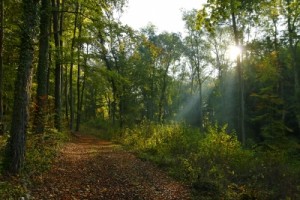How to Have Bigfoot Interaction
Friday, February 1, 2013This article is meant to help in the understanding of these creatures and to also aid the researcher in feeling at ease in their presence – easier said than done; however, they are not antagonistic. Even though they live in the wilderness like an animal, they behave more humanistic than an animal, and considering them on that basis is important. Just as humans have different personalities; these creatures also possess unique individuality. Some will interact and some won’t.
 Plan your trip into a specific remote area, suggestive of where these creatures may be. Plan a stay of at least two or three days… the longer, the better. When dealing with humans they need to feel at ease with the environment that you’ve created… they need to become accustomed to you and you need to make them curious. You should have a fixed exposed camp and a friend or two that share the same motive… winning the creature’s trust. Make camp where other hikers or packers don’t frequent and don’t take dogs with you. A small creek would be better than a lake – be off the mainstream trail. They prefer to traverse waterways, minimizing their signs.
Plan your trip into a specific remote area, suggestive of where these creatures may be. Plan a stay of at least two or three days… the longer, the better. When dealing with humans they need to feel at ease with the environment that you’ve created… they need to become accustomed to you and you need to make them curious. You should have a fixed exposed camp and a friend or two that share the same motive… winning the creature’s trust. Make camp where other hikers or packers don’t frequent and don’t take dogs with you. A small creek would be better than a lake – be off the mainstream trail. They prefer to traverse waterways, minimizing their signs.
After setting up camp, take a walk. In an attempt to interact or just perhaps announce your presence, find a small log (two to three-inches in diameter) and periodically strike it sharply two or three times against a larger log or tree trunk with a measured beat. The more resonant the sound, the better it carries. You may or may not hear a report back, but if you do and you are certain there are no other humans in the area, you’ve probably got the attention of a creature. Rocks struck together, one in the hand against a larger one on the ground, also work well in the same way. Use a sequence of three strikes, and not too often. I do not recommend trying to be stealthily while walking through the woods. Unless it’s an accident you will not sneak up on one of these creatures, so be bold and get their attention. If you’re intruding in an unacceptable area they may throw rocks, but they will not hit you with them—it’s just a warning—probably a young one in the area and they don’t want you there.
Wait until well after they’ve made their presence known before setting up camera-traps or deceptive devices… but have a pocket camera and recorder ready. Because these creatures seldom reveal themselves except on their own time and terms; it’s important to not appear too aggressive. They seem to have a high degree of sensitivity to humans and the human exploitations of them. Therefore, an honest cheerful attitude is recommended. After dark they may come in close, but will probably remain hidden from sight. It’s common for them to announce themselves by snapping a large dried limb. This is no accident; they are observing your response.
If you hear the definite crack of a limb or rhythmic striking of rocks continue what you are doing. Their first displays may be intimidating but try to remain calm. Do not shine your flashlight toward the sound or act alarmed. If these creatures think they don’t have your attention they may come closer. You shouldn’t be afraid, or embarrassed, to ‘talk’ to them. Using a calm voice talk as you would to a friend—they may interact so be prepared to record the event. If you see movement and decide to try a camera shot with a flash you may only get one chance, but under the right circumstances it may be worth taking that chance. However, at that time your adventure might also end.
If you have repeated encounters while at this location you’re developing a rapport. I suggest you offer them a gift, such as food—not tainted food, good food—they are omnivorous. If you’ve been collecting pinecones for a campfire don’t be surprised if when returning from a hike you find a pile of them placed somewhere in your camp. Remember, a lot of people boastfully claim to have shot at a bigfoot, yet many of these creatures will still interact if not threatened—it’s up to us.
There is an enigma associated with these giants and I suggest ‘not’ underestimating them. Be simple, relaxed, and not too analytical to begin with – just take what comes. The Sierra bigfoots that I dealt with are sentient beings, use cognizant thought, and possess language; have respect with what you’re dealing with; be there to learn.
While in the field you can try these techniques and others of your own invention. It’s important to record your observations – take lots of notes, i.e., weather, food taken, traps considered/used, type of habitat (flora/fauna), etc.
Good Luck.
